vatican
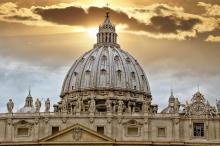
Following complaints, the Vatican’s cultural office has removed an image of a naked female torso bound in ropes that was used to advertise a women’s conference.
The Pontifical Council for Culture had chosen a photograph of the 1936 “Venus Restored” sculpture, by the late American artist Man Ray, as befitting for its Feb. 4-7 conference titled “Women’s Cultures: Equality and Difference.”
But the choice of a sculpture bound in ropes to discuss women’s emancipation was deemed inappropriate in some quarters. The Pontifical Council’s president, Italian Cardinal Gianfranco Ravasi, initially defended the choice. Ravasi was seen as a contender going into the conclave that elected Pope Francis two years ago.
“Cardinal Ravasi has chosen not to remove the image as it speaks clearly for one of the central points of the document: many women, alas, are still struggling for freedom (bound with rope), their voices and intellect often unheard (headless), their actions unappreciated (limbless),” according to a statement that appeared alongside the controversial image.
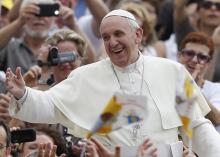
The “Pope of the Interview” strikes again: Pope Francis has given a lengthy — and fascinating — interview to a Mexican television station, which broadcast it on March 13 to mark the second anniversary of his election.
Speaking to the program “Noticieros Televisa,” Francis displays his usual candor, dishing details about the secret conclave that elected him, talking about how he senses his papacy will be short, how the church must get tough on sexual abuse, and how all he really wants “is to go out one day, without being recognized, and go to a pizzeria for a pizza.”
Here are some of the highlights based on Vatican Radio’s English translation and the original Spanish:
On whether he likes being pope:
“I do not mind!”
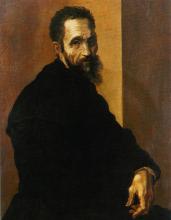
The Vatican on March 9 said it has received a ransom demand to recover letters signed by Michelangelo, stolen from the Holy See nearly 20 years ago.
Two letters signed by Michelangelo, one written in its entirety by the Renaissance artist, were stolen from the Vatican’s Fabbrica di San Pietro archive in 1997.
The thefts were kept secret until Sunday, when the Italian daily Il Messaggero revealed that the documents had been put up for ransom.
Responding to the news on Monday, Vatican spokesman Federico Lombardi said a nun had long since reported the theft.
“More recently Cardinal Comastri, the actual president (of the archive), received a proposal to recover, at a certain price, such documents,” Lombardi told Vatican Radio.
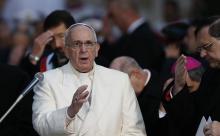
One reason the cardinals gathered in the Sistine Chapel elected Jorge Mario Bergoglio as Pope Francis two years ago on March 13 was a brief but powerful speech the Argentine cardinal made shortly before the conclave in which he denounced the “theological narcissism” of the Roman Catholic Church.
The church, Francis declared, was “sick” because it was closed in on itself and needed to go out “to the peripheries” and risk all by accompanying the shunned and marginalized.
In these past two years, Francis’ efforts to do just that have captivated the public’s imagination and inspired a wide swath of the Catholic spectrum with visions of a newly resurgent faith unshackled from years of scandal and stagnation.
But there was another big reason the cardinals voted for Bergoglio: They thought the Jesuit archbishop of Buenos Aires was the one man with the administrative chops to finally rein in the dysfunctional papal bureaucracy, known as the Roman Curia, that was often at the root of the Catholic crisis.
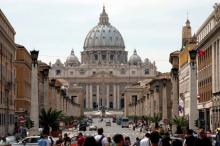
The Italian government is on high alert after threats from the Islamic State called Italy “the nation signed with the blood of the cross.”
Italy is one of a handful of major Western counties that has not been victim of a large-scale terror assault since the Sept. 11 attacks in the U.S.
Italian officials fear extremists could enter the country amid the growing tide of refugees arriving by boat from North Africa. About 500 extra troops have been stationed to guard symbolic targets in Rome and monitor the streets of the capital for suspicious activity.
The video threat, released with images of 21 Coptic Christians from Egypt who were beheaded this month, warned that Islamic State forces were “south of Rome,” in Libya. At its closest point, Libya is little more than 100 miles from the Italian islands of Sicily and Sardinia.
This comes four months after the Islamic State’s propaganda magazine Dabiq ran a cover photo of the militant group’s flag flying above the obelisk in St. Peter’s Square in the Vatican with the headline: “The failed crusade.”

The U.S. cardinal who heads the Vatican’s commission on sexual abuse of children by clergy warned his fellow Roman Catholic bishops on Feb. 16 not to behave as if the problem had passed.
Cardinal Sean O’Malley of Boston told a conference at Rome’s Pontifical Gregorian University that some prelates were still reluctant to deal with the problem openly.
“It would be perilous for us, as leaders of the Church, to consider that the scandal of clergy sexual abuse is for the most part a matter of history and not a pressing concern here and now,” said O’Malley, whose commission advises Pope Francis on how to root out the abuse that has shamed the Church.
“Its not a pleasant topic. It’s easier just to ignore it and hope it will go away (but) when we are defensive and secretive, the results are disastrous,” he said in his speech.
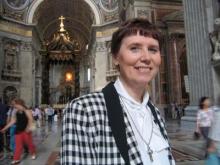
ROME — On its 15 previous pilgrimages, the Catholic gay rights group New Ways Ministry drew maybe two-dozen people to visit holy sites in places like Assisi and Rome.
This year, the number of pilgrims unexpectedly doubled to 50.
Chalk it up to the so-called Francis Effect, where the pope’s open-arms acceptance is giving new hope to gay and lesbian Catholics who have felt alienated from their church for decades.
What’s been even more surprising is that both New Ways and a similar Catholic LGBT organization in Britain are finding support from the Catholic hierarchy in their efforts to meet the pontiff when they both visit the Vatican on Ash Wednesday, the start of Lent, the period of penance and fasting preceding Easter.
For example, Archbishop Georg Ganswein, head of the papal household and the top aide to Pope Emeritus Benedict XVI, responded to New Ways’ request for a papal meet-and-greet by reserving tickets for the group at Francis’ weekly public audience in St. Peter’s Square. It’s not a private meeting — which is tough for anyone to get — but it’s not nothing.
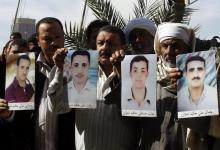
Pope Francis on Feb. 16 denounced the brutal slayings of 21 Coptic Christians in Libya by militants linked to the Islamic State, saying “they were assassinated just for being Christian.”
“The blood of our Christian brothers is a witness that cries out,” Francis said in off-the-cuff remarks during an audience with an ecumenical delegation from the Church of Scotland.
The pope, switching to his native Spanish, noted that those killed only said “Jesus help me.”
“Be they Catholic, Orthodox, Copts, Lutherans, it doesn’t matter: They’re Christian! The blood is the same: It is the blood which confesses Christ,” Francis said.
He said their deaths bore witness to “an ecumenism of blood” that should unite Christians, a phrase he has used repeatedly as the Islamic State continues its bloody march.
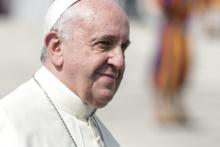
In a powerful sermon that signaled his desire to push ahead with historic reforms, Pope Francis on Sunday said the Roman Catholic Church must be open and welcoming, whatever the costs.
He also warned the hierarchy not to be “a closed caste” but to lead in reaching out to all who are rejected by society and the church.
“There are two ways of thinking and of having faith: we can fear to lose the saved and we can want to save the lost,” Francis told hundreds of cardinals and bishops arrayed before him in St. Peter’s Basilica at a Mass centered on the story of Jesus healing a leper rather than rejecting him.
“Even today it can happen that we stand at the crossroads of these two ways of thinking,” the pope said as he outlined the current debate in the church between those seen as doctrinal legalists and those, like Francis, who want a more pastoral approach.
“Jesus responds immediately to the leper’s plea, without waiting to study the situation and all its possible consequences,” Francis declared. “For Jesus, what matters above all is reaching out to save those far off, healing the wounds of the sick, restoring everyone to God’s family. And this is scandalous to some people!”
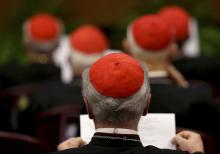
Pope Francis’ new cardinals, who will be formally installed on Feb. 14, represent everything the pope says he wants for the future of Catholicism: a church that reaches out to the periphery and the margins, and one that represents those frontiers more than the central administration in Rome.
That’s why he picked cardinals for the first time ever from countries like Myanmar and Cape Verde, as well as one from the Pacific archipelago of Tonga, which has just 15,000 Catholics out of a population of 100,000 spread across 176 islands.
The 15 new cardinals who are of voting age — five new “honorary” cardinals are over 80 and ineligible to vote for the next pope — come from 14 countries and include prelates from Ethiopia, Panama, Thailand, and Vietnam, and from places in Europe far removed from the traditional power dioceses of Old World Catholicism.
In fact, only one new cardinal comes from the Roman Curia, the Italian-dominated papal bureaucracy that Francis is struggling to tame in the wake of a series of scandals that revealed a deep dysfunction at Catholicism’s home office.
But will diversifying the College of Cardinals make it look more like the church’s global flock of 1.2 billion members?
Or will it leave the electors so fragmented by geography, language and viewpoints that they won’t be able to serve as a counterweight to career churchmen in Rome?
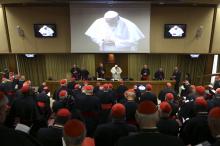
Pope Francis called for a Vatican that operates with “absolute transparency” as he gathered more than 165 cardinals in Rome for high-level meetings aimed at tackling one of the toughest challenges of his reformist papacy: overhauling the dysfunctional bureaucracy of the Roman Curia.
The goal, Francis told a lecture hall filled with the scarlet-clad “princes of the church, is to foster “greater harmony” among the different church offices in a bid to foster “absolute transparency that builds authentic … collegiality.”
“Reform is not an end in itself, but a means of bearing a powerful Christian witness,” Francis said.
That was a nod to the scandals that overshadowed the waning years of Benedict XVI’s papacy and undermined the Vatican’s credibility with the public and the dismayed churchmen who had to deal with the fallout.
The two-day gathering with the cardinals – including the 20 new appointees who the pope will officially elevate on Feb. 14– comes almost two years to the day after Benedict stunned the world by announcing that he would become the first pope in nearly 600 years to resign from office.
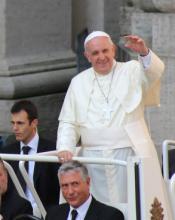
Less than a month after saying Catholics don’t have to multiply “like rabbits,” Pope Francis on Feb. 11 once again praised big families, telling a gathering in St. Peter’s Square that having more children is not “an irresponsible choice.”
He also said that opting not to have children at all is “a selfish choice.”
A society that “views children above all as a worry, a burden, a risk, is a depressed society,” Francis said.
Citing European countries where the fertility rate is especially low, the pope said “they are depressed societies because they don’t want children. They don’t have children. The birth rate doesn’t even reach 1 percent.”
He once again praised the 1968 encyclical of Pope Paul VI, Humanae Vitae, that reiterated the ban against artificial contraception while enjoining Catholics to practice “responsible parenthood” by spacing out births as necessary.
Francis added, however, that having more children “cannot automatically become an irresponsible choice.”
“Not to have children is a selfish choice,” he said. “Life rejuvenates and acquires energy when it multiplies: It is enriched, not impoverished!”

The German churchman christened the “Bishop of Bling” by the media for lavish expenditures he made on his residence and church offices has quietly been given a low-level post at the Vatican, nearly a year after Pope Francis ousted him from the Limburg diocese.
Bishop Franz-Peter Tebartz-van Elst may already be in Rome, according to church sources and media reports, and next month will begin work as a “delegate” at the Pontifical Council for Promoting the New Evangelization, an office in the Roman Curia.
While the Vatican has so far declined to comment, Tebartz-van Elst will reportedly help prepare catechetical materials – his area of expertise – for various national bishops conferences. But he won’t have his name attached to any documents, according to Archbishop Rino Fisichella, head of the council.
The post was created for Tebartz-van Elst and has the hallmarks of a “make-work” job because the Vatican couldn’t figure out what else to do with the prelate.
Controversy over Tebartz-van Elst’s outlays in Limburg erupted in October 2013 when it was revealed that costs to renovate the diocesan center and the bishops’ home ran several times over the initial estimate, to some $40 million.

A papal commission on clergy sex abuse is close to giving Pope Francis recommendations on how to punish bishops who shield priests suspected of misconduct, one of several moves announced Feb. 7 that are encouraging the two victims on the panel.
But the two victims also said the Vatican has a year or two at most to implement policies with teeth, otherwise they will leave.
Peter Saunders of Great Britain, who was sexually assaulted as a boy by priests at his Catholic school, told a crowded news conference at the Vatican press office that he came to the meeting “with a fair degree of trepidation” that anything significant would result.
But after the initial two days with what he called a “group of quite remarkable and determined people,” including Boston Cardinal Sean O’Malley, head of the commission, he said “the trepidation has kind of disappeared.”
“I’m actually very, very hopeful that there are going to be some very significant things happening,” especially on disciplining bishops, said Saunders, who heads the London-based National Association for People Abused in Childhood.
But he warned that “if in a year or two there isn’t some firm action on those matters then I don’t think I’ll be sitting here talking to you.”
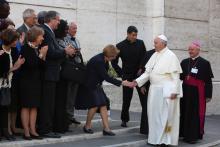
Whether women can, or should, “have it all” — both work and family — has been one of the most contentious cultural debates of the modern age and one any secular or religious figure engages at his or her peril.
But Pope Francis is nothing if not intrepid, and on Feb. 7 he plunged in by arguing that the Catholic Church should help “guarantee the freedom of choice” for women to take up leading posts in the church and in public life while also maintaining their “irreplaceable role” as mothers at home.
In his remarks to the Vatican’s Council for Culture, which has been holding meetings on the role of women in modern life, Francis sought to carve out a “new paradigm” in the gender wars.
He said Western societies have left behind the old model of the “subordination” of women to men, though he said the “negative effects” of that tradition continue.
At the same time, he said, the world has moved beyond a model of “pure and simple parity, applied mechanically, of absolute equivalence” between men and women.
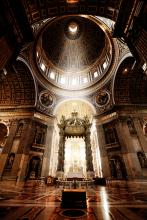
THE VATICAN REPORT on the three-year investigation of U.S. Catholic sisters landed softly in the national media in December, as major stories combined with Christmas to fill the news cycle. Good timing, if the intent was to bury it. But the story isn’t over.
Some years ago, two Vatican offices, under the leadership of Pope Francis’ predecessor, Pope Benedict XVI, launched separate investigations of U.S. women religious, first of the individual orders and later of their leaders’ membership organization.
Why? The general consensus seems to be that high-ranking conservative U.S. bishops were angry at sisters who had generally served as obedient poorly paid minions to do their bidding, but who now were infected with a certain “feminist” outlook on life.
A September 2008 conference on religious life, held at Massachusetts’ Stonehill College, gathered conservative voices critical of how U.S. sisters had “modernized” following the Second Vatican Council. Within a few months, a Vatican office (the “Congregation for Institutes of Consecrated Life and Societies of Apostolic Life”) announced it would survey every group of “active” (vs. contemplative) U.S. Catholic sisters.
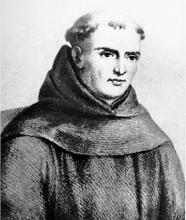
When Pope Francis unexpectedly announced last month that he would canonize the Rev. Junipero Serra during his visit to the U.S. in September, he thrilled the many fans of the legendary 18th-century Spanish Franciscan who spread the Catholic faith across what is now California.
But the pontiff who has decried the “ideological colonization” of the developing world by the secular West is now facing criticism from those who say Serra — called “the Columbus of California” — abused Native Americans and pressured them to convert, aiding in the devastation of the indigenous culture on behalf of the Spanish crown.
“Serra was no saint to us,” Ron Andrade, executive director of the Los Angeles City/County Native American Indian Commission, told the Los Angeles Times.
Some of Serra’s sharpest critics say he was part of an imperial conquest that beat and enslaved Native Americans, raped their women, and destroyed their culture by forcing them to abandon their traditional language, diet, dress and other customs and rites.
Add in the diseases introduced by these Old World invaders, and the original indigenous population of perhaps 300,000 was decimated by as much as 90 percent.
“If (Serra) is elevated to sainthood,” Nicole Lim, the executive director of the California Indian Museum and Cultural Center in Santa Rosa, told The New York Times, “then (Serra) should be held responsible for the brutal and deadly treatment of native people.”

The Vatican will offer homeless people in Rome not only showers but also haircuts and shaves when new facilities open next month, the head of Pope Francis’ charity office said.
The Vatican announced last year that it would provide shower facilities in St Peter’s Square for homeless people.
Bishop Konrad Krajewski told the Italian Catholic newspaper Avvenire on Jan. 29 that it would also offer haircuts and shaves when the services start on Feb. 16 in an area under the colonnade of the square.
Krajewski, whose official title is the pope’s almoner, said barbers and hairdressers would volunteer their services on Mondays, the day their shops are traditionally closed in Italy.
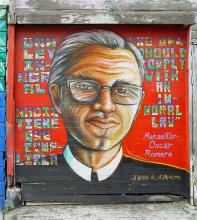
Archbishop Oscar Romero, the hero of the Catholic left who was assassinated in 1980 while celebrating Mass in El Salvador, is inching one step closer to sainthood after his case languished in bureaucratic limbo for decades.
According to the Italian Catholic bishops daily, Avvenire, a panel of theologians at the Congregation for the Causes of Saints has ruled unanimously that Romero should be considered a martyr, or murdered “in odium fidei” (Latin for “hatred of faith”).
The paper reported the ruling was made on Jan. 7. The move is considered a decisive step on Romero’s path to sainthood.
Romero, the archbishop of San Salvador, was shot dead by right-wing death squads while celebrating Mass in March 1980. His murder came a day after he delivered a homily calling for soldiers to lay down their guns and end government repression in the country’s bloody civil war.
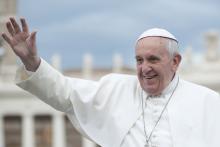
Pope Francis reinforced his radical reshaping of the Catholic Church by naming 20 new cardinals from countries as far afield as Ethiopia, Tonga, Thailand, and Panama.
The clerics – who come from 18 different countries – include 15 who are eligible to vote for the pope’s successor in a future conclave, and five retired bishops and archbishops “distinguished for their pastoral charity” who are over age 80 and ineligible to select the next pontiff.
Dissatisfied with the slow pace of change in Rome, Francis’ appointments reflect his desire for “pastors on the front line of difficult situations,” one Vatican observer said, who can bring a new perspective from the often overlooked outposts of global Christianity.
The Vatican’s chief spokesman, the Rev. Federico Lombardi, said the choices showed the pope’s most important criteria was “universality,” and indicated he was not “chained to tradition” as he moves the balance of power at the highest levels of the church closer to the developing world.
It is the first time ever that cardinals have been selected from Tonga, Myanmar, and Cape Verde to become “princes of the church.” There are only five Europeans included among the 15 new electors – two from Italy and three others from Corsica, Spain, and Portugal. The United States was shut out for the second time in a row.